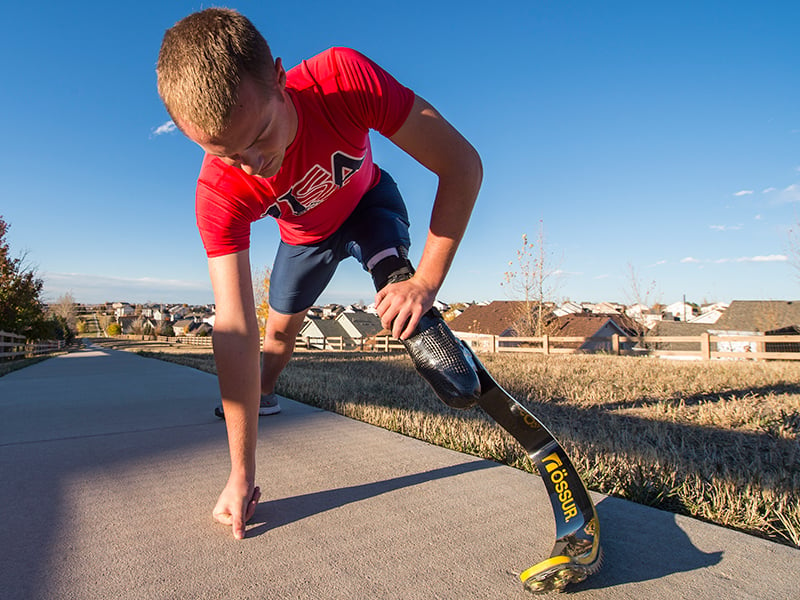- Doctors & Departments
-
Conditions & Advice
- Overview
- Conditions and Symptoms
- Symptom Checker
- Parent Resources
- The Connection Journey
- Calm A Crying Baby
- Sports Articles
- Dosage Tables
- Baby Guide
-
Your Visit
- Overview
- Prepare for Your Visit
- Your Overnight Stay
- Send a Cheer Card
- Family and Patient Resources
- Patient Cost Estimate
- Insurance and Financial Resources
- Online Bill Pay
- Medical Records
- Policies and Procedures
- We Ask Because We Care
Click to find the locations nearest youFind locations by region
See all locations -
Community
- Overview
- Addressing the Youth Mental Health Crisis
- Calendar of Events
- Child Health Advocacy
- Community Health
- Community Partners
- Corporate Relations
- Global Health
- Patient Advocacy
- Patient Stories
- Pediatric Affiliations
- Support Children’s Colorado
- Specialty Outreach Clinics
Your Support Matters
Upcoming Events
Mental Health Town Hall
Tuesday, April 23, 2024Join Children’s Hospital Colorado pediatric experts for a virtual...
-
Research & Innovation
- Overview
- Clinical Trials
- Q: Pediatric Health Advances
- Discoveries and Milestones
- Training and Internships
- Academic Affiliation
- Investigator Resources
- Funding Opportunities
- Center For Innovation
- Support Our Research
- Research Areas

It starts with a Q:
For the latest cutting-edge research, innovative collaborations and remarkable discoveries in child health, read stories from across all our areas of study in Q: Advances and Answers in Pediatric Health.


Garrison: "I Never Wanted to be Normal"

A gym bag of Garrison’s various prosthetic legs sits by the stairs, each equipped with attachments for various purposes, some with shoes. But the blade is special. It sits apart, leaning on the counter, a sleek, sinuous curve of Kevlar and carbon fiber, built for speed.
Its owner, Garrison Hayes, 16, straps it on at the knee, although Garrison’s “knee” is actually his own repurposed foot, stunted, but still functional.
“It’s about two sizes smaller than the right side,” Garrison explains, fitting it into the cup of the blade. “I guess it was the shock of surgery. It’s still growing, though.”
Garrison was diagnosed with osteosarcoma — bone cancer — at 6 years old. His parents grew concerned when, weeks after a seemingly minor knee bump, he was still walking with a limp. Garrison’s mom, Kori, vividly recalls getting called in for the X-ray results.
“It was like, ‘there’s something in his knee that shouldn’t be there.’”
“I thought it was a marble or something,” Garrison quips.
The challenging prognosis
The prognosis: The cancerous segment of bone would have to be removed. Children’s Hospital Colorado offered him a choice of a knee replacement, a full amputation or the Van Ness tibial rotationplasty, a procedure in which the cancerous segment of bone is removed and the rest of the limb is rotated and reattached, giving the patient better control of the prosthesis.
The knee replacement would have left Garrison’s leg cosmetically intact, but he would never be able to run, jump or play. For Garrison, the choice was clear. It didn’t matter much when he was 6 years old that the Van Ness procedure would make him different. A decade later, he hasn’t changed his mind.
“I never wanted to be normal,” he says.
A true athlete
That much is clear as he effortlessly swings the blade over the fence at the back of his yard and runs, blade flexing, uphill to a view of rolling suburban hills and downtown Denver beyond. A true athlete, Garrison plays a seemingly endless list of sports (“It’s easier to say which ones I don’t play,” he deadpans), but his true passion, the one the blade serves, the one where he shines among the best in the world, is track and field: javelin, high jump and the 100-meter dash.
“He trains every day,” says dad Chris, watching him do squat-jumps in a weighted vest. “He’s a beast on weights. He’s increased his vertical by about six inches over the last year.”
At least part of that impressive gain owes to Garrison’s past work with Travis Heare, MD, at the Center for Gait and Movement Analysis.
There, Dr. Heare used hyper-responsive kinetic sensors, electromyography, and 3D motion capture technology to scrutinize every minute aspect of how Garrison’s muscles fire. In his rotated leg, Garrison’s calf muscles and quads are fused; with physical therapy and training, Dr. Heare helped Garrison learn to maximize his stronger quads.
Though Garrison didn’t qualify for the 2016 Paralympic Games in Rio de Janiero, there’s always Tokyo in 2021. In the meantime, says Garrison, “Did you know I hold the world record in the three-legged race?” He cracks a smirk. “Just kidding — two and a half.”



 720-777-0123
720-777-0123



